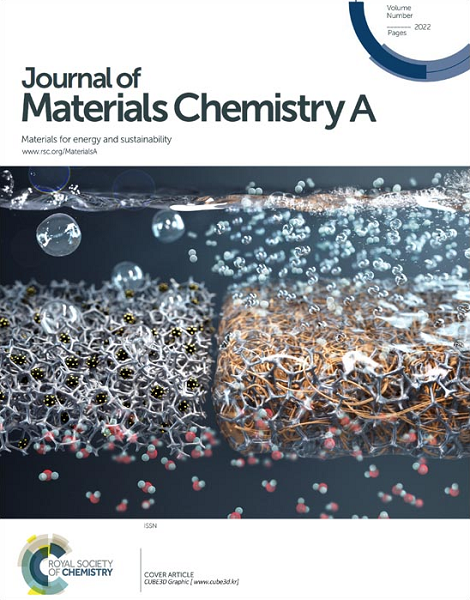Dual-Functional Composite Coating with Flame-retardant and Antibacterial Properties for Flexible Polyurethane Foams
IF 10.7
2区 材料科学
Q1 CHEMISTRY, PHYSICAL
引用次数: 0
Abstract
Dual functionalization of polyurethane (PU) foam to achieve both flame-retardant and antibacterial properties is crucial for meeting stringent fire safety and hygiene standards. Herein, an efficient dual-functional coating, PDA@CS-POM, is developed by combining a transition metal-substituted polyoxometalate (POM), [Co4(H2O)2(PW9O34)2]10-, with a catecholamine-tethered polycation (PDA@CS(+)) using a straightforward layer-by-layer (LbL) assembly method. The catecholamine groups in PDA@CS enable effective LbL assembly on hydrophobic silicon wafers and flexible PU foams without substrate pre-treatment. In particular, the PDA@CS-POM coating achieves a growth rate of 11.3 nm/BL, more than twice that of the reference CS-POM coating. Compression-recovery cycles demonstrate that the PDA@CS-POM coating increased the toughness of the PU foam while maintaining its inherent resilience. Assessments including LOI, cone colorimetry, zone of inhibition, and colony culture tests confirm the efficient flame-retardant and antibacterial properties of the PDA@CS-POM coated PU foams. These dual-functional properties of the PDA@CS-POM coating positively correlate with the effects of the POM in inhibiting foam degradation, improving graphitization/aromatization of char barrier, and disrupting bacteria redox processes or cytoskeleton dynamics.求助全文
约1分钟内获得全文
求助全文
来源期刊

Journal of Materials Chemistry A
CHEMISTRY, PHYSICAL-ENERGY & FUELS
CiteScore
19.50
自引率
5.00%
发文量
1892
审稿时长
1.5 months
期刊介绍:
The Journal of Materials Chemistry A, B & C covers a wide range of high-quality studies in the field of materials chemistry, with each section focusing on specific applications of the materials studied. Journal of Materials Chemistry A emphasizes applications in energy and sustainability, including topics such as artificial photosynthesis, batteries, and fuel cells. Journal of Materials Chemistry B focuses on applications in biology and medicine, while Journal of Materials Chemistry C covers applications in optical, magnetic, and electronic devices. Example topic areas within the scope of Journal of Materials Chemistry A include catalysis, green/sustainable materials, sensors, and water treatment, among others.
 求助内容:
求助内容: 应助结果提醒方式:
应助结果提醒方式:


